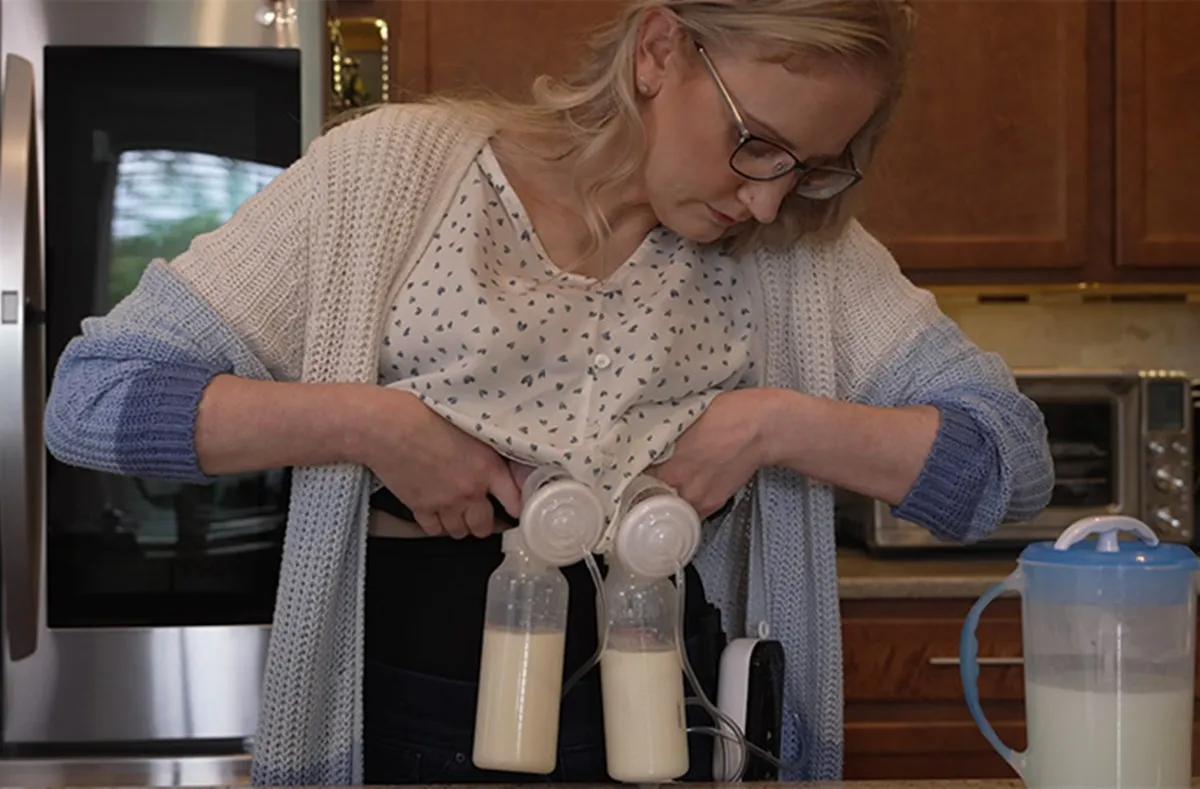Know more about hyperlactation syndrome, the condition that led to woman lactating record-breaking premature babies
The Aloha, Oregon, USA, native donated 1,599.68 litres to a milk bank between 20 February 2015 and 20 June 2018. In the endeavour, she has nourished thousands of children--even helping to save the lives of premature babies.
 Over the past nine years, Elisabeth has not only donated to local families but has come out in support of recipients globally. (Source: Guinness World Records)
Over the past nine years, Elisabeth has not only donated to local families but has come out in support of recipients globally. (Source: Guinness World Records)A mother of two, Elisabeth Anderson-Sierra, holds the Guinness World record for the largest donation of breastmilk by any individual. The Aloha, Oregon, USA, native donated 1,599.68 litres to a milk bank between 20 February 2015 and 20 June 2018. In the endeavour, she has nourished thousands of children–even helping to save the lives of premature babies.
“This only accounts for milk that I donated to a milk bank between the years of 2015 and 2018,” Elisabeth told Guinness World Records.
Over the past nine years, she has not only donated to local families but has come out in support of recipients globally. Elisabeth estimated the total amount of breastmilk donated to be over 350,000 ounces.
She donated to many recipients who have been labelled as “failure to thrive”. “Being able to turn that around and (have) that label removed in so many different stories has just been everything to me,” she said.
“These are the things that I focus on. These are the positives and why I continue doing what I do.”
In one instance, she had helped a premature baby in Puerto Rico. The baby had lost his mother due to childbirth complications and his father had been purchasing breastmilk from a milk bank.
“My husband is Puerto Rican and we had gone to Puerto Rico right after Hurricane Maria,” she said.
Elisabeth shared that she has a medical condition known as hyperlactation syndrome, where breastmilk overflow occurs because of increased milk production. “My body creates a lot of the hormone called prolactin and that is what drives milk production,” she said.
According to Dr Ritu Sethi, Director, The Aura Speciality Clinic Gurgaon & Senior Consultant- Gynaecology, Cloud Nine Hospitals, Gurgaon, hyperlactation syndrome, also known as oversupply syndrome or hypergalactia, is a condition where a breastfeeding person produces an excessive amount of breast milk. It is characterised by an overabundance of milk production, which can lead to various challenges and difficulties for both the breastfeeding person and the baby.
 “My body creates a lot of the hormone called prolactin and that is what drives milk production,” she said. (Source: Guinness World Records)
“My body creates a lot of the hormone called prolactin and that is what drives milk production,” she said. (Source: Guinness World Records)
“Symptoms for the mother include breasts that may become uncomfortably full, swollen, and firm due to the overabundance of milk. The fast and forceful flow of milk can cause discomfort, pain, or a tingling sensation during breastfeeding or pumping sessions. Engorgement and frequent milk supply can increase the likelihood of developing mastitis (breast infection) or plugged ducts,” she said.
The causes of hyperlactation syndrome are not fully understood, but several factors contribute to this condition. “Hormonal imbalances, particularly in prolactin and oxytocin, can result in an overproduction of breast milk. Additionally, the principle of supply and demand plays a role, as frequent and prolonged breastfeeding sessions stimulate the breasts to produce more milk than necessary. The baby’s latch and feeding habits also influence milk supply, as an efficient latch and vigorous feeding can signal the breasts to produce more milk,” Dr. Prasannalatha, Senior Obstetrician & Gynecologist, Kamineni Hospitals, Hyderabad told indianexpress.com.
Treatment and prevention strategies for hyperlactation syndrome focus on managing milk oversupply and addressing associated breastfeeding challenges. These include:
*Block feeding: This involves nursing or expressing milk from one breast per feeding session, allowing the baby to receive hindmilk, which is richer in fat and can help satisfy their hunger. Block feeding helps regulate milk production and slows down the flow of milk.
*Breast compression: During breastfeeding, using gentle pressure on the breast with your hand can help slow down the milk flow and allow the baby to manage the flow more easily.
*Laid-back nursing positions: Positions like laid-back or reclined breastfeeding can allow the baby more control over the flow of milk. In these positions, gravity helps slow down the flow, and the baby can adjust their latch and positioning, according to their comfort.
*Utilise breastfeeding tools: Using breastfeeding tools, like nipple shields or paced bottle feeding, can help slow down the milk flow and allow the baby to have more control during feeds.
*Expressing milk: Expressing or pumping milk before breastfeeding can help reduce breast fullness and excessive milk flow. Removing a small amount of milk, just until the initial forceful letdown subsides, can make breastfeeding more manageable for the baby.
For all the latest Parenting News, download Indian Express App.



- 01
- 02
- 03
- 04
- 05



























